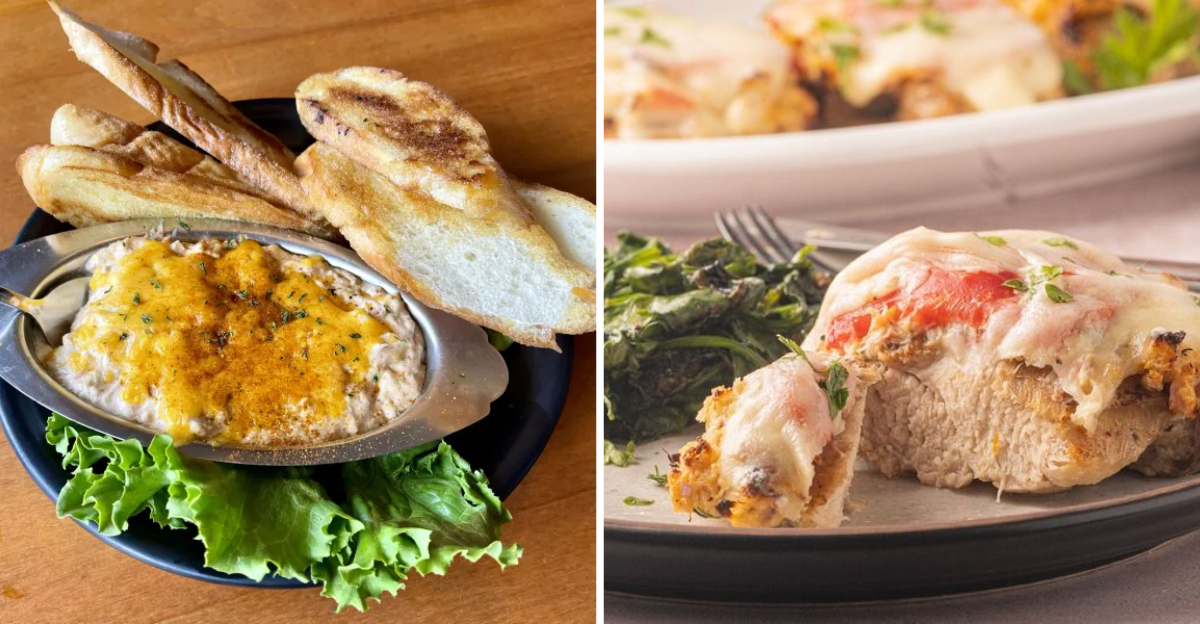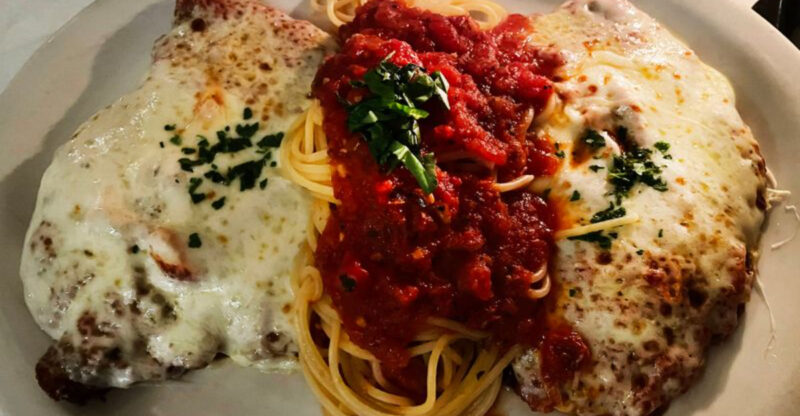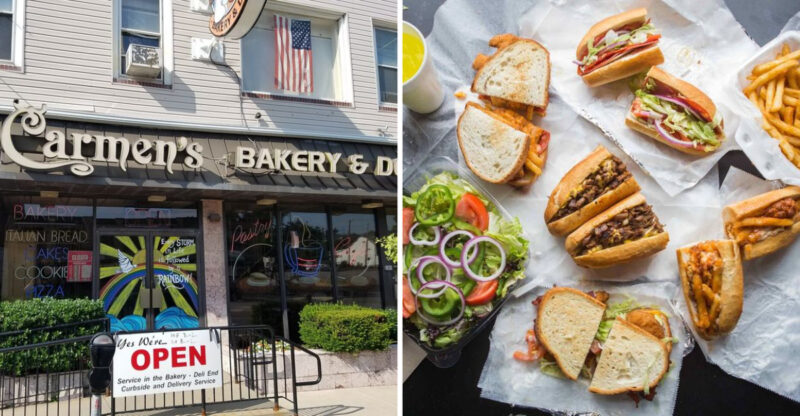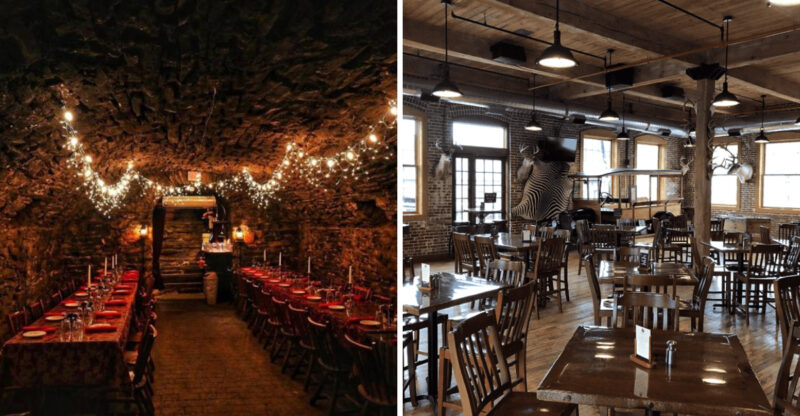13 Tricky Maryland Food Names That Outsiders Always Get Wrong

Maryland has a food scene that’s as unique as its accent. From crab-filled delicacies to desserts you won’t find anywhere else, the Old Line State takes pride in its culinary traditions.
But if you’re visiting from out of state, you might stumble over some of these food names and end up sounding like a total tourist.
1. Coddies
If you’ve never heard of coddies before, you’re not alone. These crispy patties are a Baltimore classic that confuses plenty of visitors who think they’re some kind of cookie or candy.
Coddies are actually made from salted cod mixed with mashed potatoes, eggs, and onions, then breaded and fried until golden. They’re traditionally served between two saltine crackers with a generous squirt of yellow mustard.
The name comes from the codfish used in the recipe, and locals have been enjoying them for generations. You’ll find them at fish markets and old-school diners throughout Baltimore. When ordering, just say “COD-eez” like you’re talking about the fish, and you’ll fit right in with the locals.
2. Berger Cookies
Are these cookies named after someone called Berger? Actually, yes! But outsiders often mispronounce this Baltimore bakery favorite, saying “BUR-jer” like a hamburger instead of the correct “BUR-gur.”
These iconic treats feature a soft vanilla shortbread cookie base topped with a thick layer of rich chocolate fudge. The fudge is so thick it’s almost half the cookie’s height, making them incredibly decadent and messy to eat.
The Berger Bakery has been making these cookies since 1835, and they’ve become a Baltimore institution. You can find them in grocery stores across Maryland, and locals often keep a box stashed in their pantry. The key is getting that name right when you ask for them at the store.
3. Natty Boh
When Marylanders talk about “Natty Boh,” they’re not discussing someone named Natalie. This nickname refers to National Bohemian beer, Baltimore’s beloved local brew that’s been around since 1885.
The beer features a winking, mustachioed mascot called Mr. Boh who’s become an icon of Baltimore culture. You’ll see his face on everything from t-shirts to tattoos around the city.
Outsiders often get confused by the nickname and might ask for “Natural Bohemian” or stumble over the pronunciation entirely. It’s simply “NAT-ee BOH,” rhyming with “go.” While the beer isn’t actually brewed in Baltimore anymore, it remains a point of pride for locals. Ordering one at a bar or Orioles game is practically a rite of passage for anyone wanting to blend in.
4. Pit Beef
It’s not barbecue, and calling it that will earn you some serious side-eye from Baltimore natives. Pit beef is a distinct regional specialty that involves roasting beef over a charcoal pit until it develops a smoky, crusty exterior.
The meat is sliced incredibly thin and served rare to medium-rare on a Kaiser roll. Most places pile on horseradish sauce and raw onions for extra flavor and bite.
Visitors often confuse pit beef with traditional barbecue or pot roast, but it’s neither. The cooking method and serving style are uniquely Maryland. You’ll find pit beef stands dotting the highways around Baltimore, especially in the eastern part of the state. When ordering, don’t ask for it well-done unless you want to scandalize the cook.
5. Otterbein’s Cookies
How would you pronounce this one? Many outsiders say “OTT-er-bine” or “OTT-er-bean,” but locals know it’s actually “OTT-er-bine” with emphasis on the first syllable.
This Baltimore-based bakery has been producing crispy, buttery cookies since 1858. Their sugar cookies and ginger cookies are legendary throughout Maryland, and you’ll find them at grocery stores and farmers markets across the state.
The cookies have a distinctive snap when you bite into them, unlike softer varieties from other brands. Otterbein’s remains family-owned and continues using traditional recipes passed down through generations. The name comes from the German founder’s surname, which explains the unique pronunciation. When you’re shopping for Maryland treats to bring home, grabbing a bag of these cookies will definitely impress the locals.
6. Smith Island Cake
Did you know Maryland has an official state dessert? Smith Island Cake earned that honor in 2008, but visitors often mispronounce the island’s name or don’t realize it’s an actual place.
This towering dessert features between 8 and 10 thin layers of moist yellow cake separated by rich chocolate fudge frosting. The entire cake is covered in more fudge, creating an impressive striped appearance when sliced.
The cake originated on Smith Island, a small community in the Chesapeake Bay accessible only by boat. Watermen’s wives created these cakes because the layers stayed moist during long fishing trips. Today, bakeries across Maryland make their own versions, and each family guards their recipe closely. Say “SMITH EYE-land” when ordering, and prepare for a seriously sweet treat.
7. Utz Chips
Though technically from nearby Pennsylvania, Utz chips are everywhere in Maryland and often get mispronounced by outsiders. It’s not “OOTZ” or “YOOTZ” the correct pronunciation is simply “UTS,” rhyming with “puts.”
This regional chip brand has been a Mid-Atlantic staple since 1921. Marylanders grow up eating Utz chips at picnics, parties, and Orioles games, making them part of the local food culture.
The company produces everything from classic potato chips to cheese balls and pretzels. Their distinctive red packaging with the little Utz girl is instantly recognizable throughout Maryland. Many locals prefer Utz over national brands and will specifically request them. When you’re at a Maryland cookout and someone offers you chips, there’s a good chance they’ll be Utz.
8. Snowballs
Are we talking about winter fun or summer treats? In Maryland, snowballs are a beloved warm-weather dessert that confuses plenty of visitors who expect actual snow.
These aren’t your typical snow cones with chunky ice. Maryland snowballs feature finely shaved ice that’s soft and fluffy, topped with flavored syrups and often finished with marshmallow cream. The texture is completely different from the crunchy ice you get elsewhere.
Snowball stands pop up across Maryland every summer, and locals have fierce loyalty to their favorite spots. Popular flavors include egg custard, skylite, and spearmint. When ordering, make sure you ask for a “snowball” not a “snow cone,” because Marylanders will definitely correct you. The marshmallow topping is optional but highly recommended for the full experience.
9. Old Bay Seasoning
Most newcomers see this yellow tin and call it “Old Bay’s” with an extra S sound, but locals know it’s simply Old Bay. Created in Baltimore back in 1939, this spice blend has become the heart and soul of Maryland cooking.
The mix contains celery salt, paprika, and a secret blend of spices that transforms everything from crabs to popcorn. Marylanders sprinkle it on just about everything fries, chicken, vegetables, and even rim their Bloody Mary glasses with it.
When you’re ordering at a seafood shack or grocery store, remember to drop that possessive S. Saying it correctly shows you understand Maryland’s most treasured culinary secret.
10. Esskay Hot Dogs
Newcomers might try to sound out every letter, but Baltimore natives know to say “ESS-kay” quickly, almost like one word. This beloved hot dog brand has been a Baltimore staple since 1858, long before most modern food companies existed.
The name actually comes from the initials S.K., which stood for Schluderberg-Kurdle, the company’s original founders. Over time, people shortened the pronunciation to the snappy “Esskay” we hear today.
These hot dogs are a must-have at Orioles games and backyard cookouts across Maryland. Getting the name right means you’re ready to enjoy an authentic taste of Baltimore’s working-class food heritage.
11. Thrashers Fries
Beach visitors sometimes say “Threshers” like the farm equipment, but locals and summer regulars know it’s “THRASH-ers” with a short A sound. These legendary boardwalk fries have been an Ocean City tradition since 1929, served in distinctive orange buckets.
What makes people mess up the name? Probably because “thresher” is a more common word, so brains automatically correct to the familiar pronunciation.
Real fans know to order them with vinegar, not ketchup that’s the authentic Maryland shore way. The fries are hand-cut and cooked in peanut oil, creating that perfect golden crunch. Saying the name correctly proves you’re not just another tourist passing through town.
12. Goody
Many people assume this cute name refers to candy or treats, but in Maryland, a Goody is actually a traditional baked pudding dessert. Pronounced exactly like it looks “GOOD-ee” this old-fashioned dish dates back to colonial times and remains popular in rural Maryland homes.
Made with bread, milk, eggs, and sugar, it creates a comforting custard-like texture that tastes like bread pudding’s country cousin. Families often add raisins or cinnamon for extra flavor.
You won’t find Goody on many restaurant menus since it’s mostly a home-cooked specialty passed down through generations. Knowing about this dessert connects you to Maryland’s deeper culinary roots beyond the famous crab dishes everyone talks about.
13. Chicken Chesapeake
First-time diners often mispronounce the second word (remember, it’s “CHESS-uh-peek”), but the real confusion comes from not knowing what this dish actually is. It’s not just any chicken recipe it’s grilled or sautéed chicken breast crowned with generous amounts of jumbo lump crab meat and rich sauce.
This combination represents Maryland’s love affair with putting crab on absolutely everything. The dish appears on menus throughout the state, from casual diners to fancy steakhouses.
Some versions use hollandaise sauce, while others prefer a cream-based topping. Either way, it’s a luxurious meal that showcases Maryland’s two favorite proteins together on one plate, creating the ultimate surf-and-turf experience.






